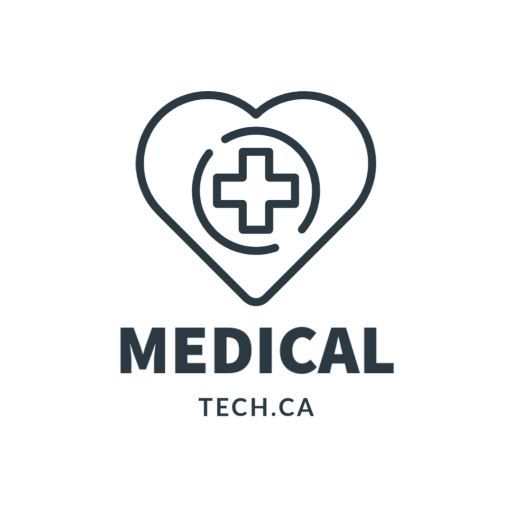
by medicaltechont | Feb 14, 2015 | Canada, e-Health, EHR, OHIP Billing, Ontario MD, Vendors
Purchasing electronic health record (EHR) systems is a process in which potential buyers and users often seek and assess information about the products in question and compare alternatives. EHR is often a new technology to the people who use it, introducing new ways of performing clinical and administrative tasks. As such, it may be regarded as an innovation. Rogers’ [] diffusion of innovations theory suggests that the process of adopting innovations (the innovation decision process) typically follows five stages: knowledge, persuasion, decision, implementation, and confirmation. Most relevant to this work is the knowledge stage in which adopters learn about the existence of an innovation (awareness knowledge), gain basic knowledge of how to use it (how-to knowledge), and understand the underlying principles behind it (principles knowledge). This is followed by the persuasion stage, in which potential adopters actively seek more information about the innovation, evaluate its characteristics, form positive or negative attitudes toward it, and subsequently adopt (eg, purchase) or reject the innovation at the decision stage.
For EHRs, the adoption decision process involves a planning phase that includes needs assessment, identifying champions, gaining buy-in from stakeholders, workflow analysis, understanding financial issues, and goal setting [,]. This is followed by a system selection phase in which information is sought from various sources including vendors and general consultants[], visits to practices that have installed systems of interest, and product demonstrations [,]. At this stage, according to Lorenzi et al [], “the internet provides a valuable source of information regarding specific EHR system products, capabilities, and the selection process” (p.8). In particular, vendor websites could play an important role in making an adoption decision by creating awareness, providing how-to and principle knowledge, and using various persuasive means to affect potential adopters’ perceptions of EHRs. However, to the best of our knowledge, no systematic efforts have been made to examine whether EHR vendors use their websites to present the information typically gathered in the pre-decision stages of Rogers’ innovation-decision process.
Read more
by medicaltechont | Jan 3, 2015 | Technology
OntarioMD recently published a survey that shows that physicians in Ontario who are using EMRs are seeing improved patient care and are experiencing better office efficiency. OntarioMD, a subsidiary of the Ontario Medical Association, manages the Province’s EMR Adoption Program on behalf of eHealth Ontario, which oversees and funds the Program.
Among the highlights of the 1,750 physician survey for 2010 are:
- 90% are using EMRs regularly to write and renew prescriptions;
- 90% are regularly receiving and managing lab results electronically, up from 82% in 2008;
- 92% are using their EMRs to enter their encounter notes, eliminating the need for paper records;
- 73% felt they were primarily paperless, up from 60% in 2008.
What about the impact to their practices’ productivity and revenue?
- In 2010, 84% of physicians reported improved or the same revenues, up from 74% in 2008
- In 2010, 79% reported improved or the same productivity, up from 62% in 2008.
Click here to read more.

by medicaltechont | Dec 20, 2014 | Canada, e-Health, eHealth, EHR, emr, Google, Ontario MD, Open-Source, Software, Technology
 Did we see this coming?
Did we see this coming?
Well the last 2 to 3 months have been interesting and a bit disconcerting, for medical professionals in Ontario. We now have 3 instances of uncertainty with technology, for those attempting to move forward with EMR in Ontario. Some of the issues could not have been foreseen. However in others we may have to address the collective wisdom, at the time, of the body responsible for certifying vendors in Ontario.
The OntarioMD mandate is to enhance EMR use in Ontario. As indicated on their website:
“OntarioMD manages the Electronic Medical Records (EMR) Adoption Program on behalf of eHealth Ontario to help community-based family physicians and specialists transition from paper records to EMRs to enhance patient care and practice efficiency. Eligible physicians receive funding and other supports to assist them with the implementation of an EMR and optimizing their EMR use.”
There is a host of initiatives by OntarioMD. However, in essence, so far they have created a certification process; where private vendors ensure that their software applications meet regulated standards. The process, overall, has been successful ; helping Ontario to finally move forward in EMR and data integration. Unfortunately there have been some recent bumps in the road.
Bell Canada is getting out of the market?
With TELUS Health making significant inroads in the EMR market who would have thought that Bell Canada would decide to step out and close its EMR offering? The OntarioMD website has already been updated indicating the following:
“Bell Canada has announced, as of December 1, 2015, the Bell EMR Service will no longer be available. Information for physicians using the Bell EMR offering.”
What does this mean for clients? Change is on the horizon. Basically by December 1, 2015, Bell EMR will be no more and clients will need to move to a certified solution. Unfortunate for those who have already spent a significant amount of time and resources getting up to the EMR standard in Ontario.
Jonoke was suspended? What?
Jonoke Software Development Inc. has been a long-standing player in the EMR market, even before there were specific standards set out by OntarioMD. Albeit their website still looks a bit dated, with a copyright dating back to 2012. OntarioMD has already indicated the following on their own website.
“Suspended** effective November 21, 2014. During the period the EMR offering is suspended, the EMR vendor is not permitted to promote or sell the EMR offering as funding eligible to physicians selecting an EMR from the EMR Adoption Program.”
What does this mean for clients? Who knows, the suspension online seems to be clouded in mystery. We can only hope that it’s not serious.
OntarioMD and vendor battle over new OSCAR EMR? What changed?
OSCAR EMR (community software created out of McMaster University) is an interesting player in the EMR market. It was amazing that an open-source vendor was able to get successfully certified, when specific standards are set out by OntarioMD. Open-source generally allows individuals and / or corporations to modify the code under GPL; as long as the code is provided back to the “Community”. Question is how can OntarioMD even manage this situation, when OSCAR has “9 OSCAR certified vendors“? OSCAR allows certain companies to distribute OSCAR EMR on their behalf. However missing from the list is the darling of the group “Indivica“, who is no longer listed as a vendor. OntarioMD has not talked much about the dispute, other than posting a link to the news article and the response under the vendor news section. However OSCAR has listed the following:
“Important Notice Regarding Indivica – The software currently being installed by Indivica does not meet the requirements to be an Affiliated Product of OSCAR EMR and is not the Ontario EMR Specification 4.1a Funding Eligible Offering from OSCAR EMR.”
What does this mean for the many clients of Indivica, in Ontario? Possibly uncertainty and more confusion. Being that Indivica has changed the code, OntarioMD would need to re-certify the application. However OntarioMD may not necessarily have the resources to check the application every time it changes; in addition to all of the other vendors pushing OSCAR. Can OntarioMD ensure that all vendors of OSCAR EMR are certified? Where are the controls on the process or basic code? Moreover it questions the concept of open-source in EMR. How can a certified product allow code to be modified if there are standards to be followed? There are so many who claim to have “OSCAR” versions that it may become confusing for clients. It may be time for OSCAR to “close” the code or choose one vendor for their application for certification. This would be difficult since it would fly in the face of open-source. You don’t have to look far for an example. Just ask Google who was faced with the same situation. Google’s Android was forked by the mighty Amazon. There is also Cyanogenmod, a pure forked version of Android. Google does not have the ability to totally control the situation, being that Android is a form of open-source and Linux. Eventually, Google may opt to merge Android with Chrome OS and close the system. However I doubt this will happen soon. The growth of Android, as a challenge to Apple’s IOS, is in part due to the OEMs who Google turned a blind eye to in order to expand Android’s presence.
Choices need to be made soon
 OntarioMD and the eHealth Ontario may have some tough choices to make in order to move EMR forward. They have systems in place to handle situations like this, however the uncertainty places many medical professionals in a difficult position. Imagine going forward with a new EMR application, such as Bell, and being told that they have to change? Or learning that your EMR application vendor has been suspended? Or lastly working with a vendor that decides to go it alone, causing one to loose funding? The times are indeed changing dynamically, however it will get better. Stability is needed and standards must be met in order to move medical offices, hospitals and the technology forward. Besides the Ontario government does not necessarily have cash to burn in these trying times.
OntarioMD and the eHealth Ontario may have some tough choices to make in order to move EMR forward. They have systems in place to handle situations like this, however the uncertainty places many medical professionals in a difficult position. Imagine going forward with a new EMR application, such as Bell, and being told that they have to change? Or learning that your EMR application vendor has been suspended? Or lastly working with a vendor that decides to go it alone, causing one to loose funding? The times are indeed changing dynamically, however it will get better. Stability is needed and standards must be met in order to move medical offices, hospitals and the technology forward. Besides the Ontario government does not necessarily have cash to burn in these trying times.
by medicaltechont | Mar 31, 2010 | Uncategorized
The Liberal government has quietly scrapped a mandatory review of a new health bureaucracy.
Premier Dalton McGuinty says the legislative review, which was to have taken place by the end of March, was dropped because Ontario’s 14 Local Health Integration Networks (or LHINs) are not yet fully operational. The LHINs took effect on April 1, 2007.
“As it turns out, all of the responsibilities that we wanted the LHINs to take on, they have yet to take on,” he told the legislature.
“In particular, a big part of their new responsibilities would be long-term care (and they) have not yet done that.”
Progressive Conservative leader Tim Hudak said the review was much needed in light of a recent spending scandal at eHealth Ontario. Millions in untendered contracts were handed out at that agency, which was criticized as the worst-managed agency Auditor General Jim McCarter had ever seen.
Hudak contends health bureaucrats at various LHINs have handed out at least $7 million in untendered contracts. “I suspect Dalton McGuinty’s motivation is clear,” he said. “He does not want to have any more scrutiny of the growing rot at his LHINs, which resembles very much the kind of scandalous spending we saw at eHealth.”
The province designed LHINs to enable better local health planning and more local freedom in distributing health dollars to the neediest recipients. Ottawa is part of the Champlain LHIN, which co-ordinates and funds hospitals, community care access centres, addictions and mental health agencies, community support services, community health centres and long-term care homes across eastern Ontario. It is headed by Dr. Robert Cushman.
Read More



 Did we see this coming?
Did we see this coming? OntarioMD and the
OntarioMD and the 